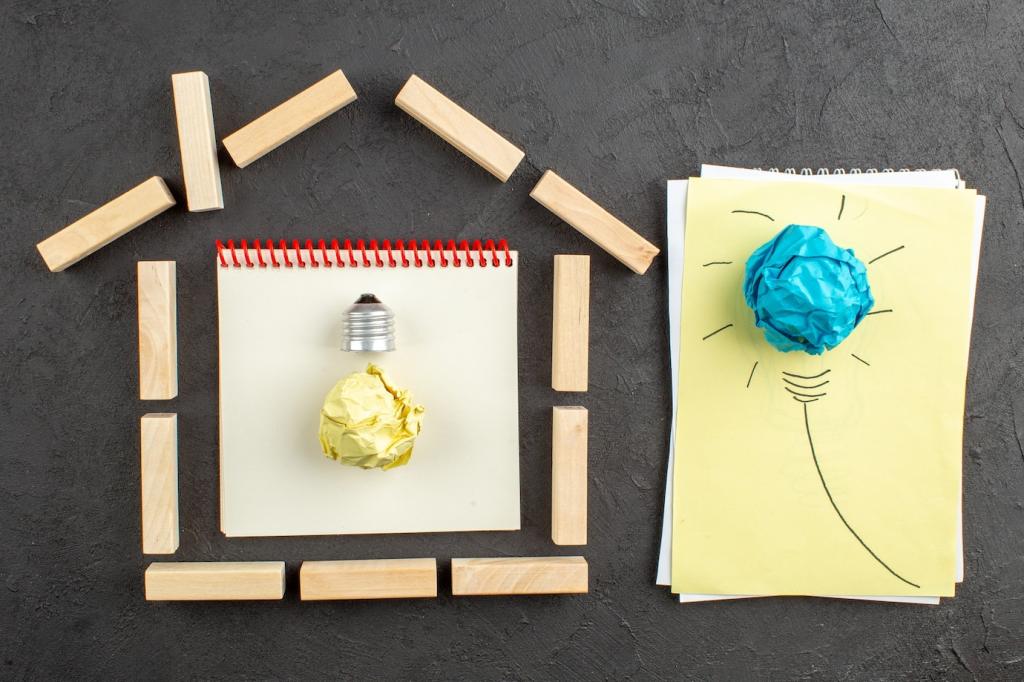Low-Waste Home Improvement Solutions: Build Better, Waste Less
Welcome to our home base for Low-Waste Home Improvement Solutions—practical, inspiring ways to renovate with intention, save materials, and create spaces you’ll love. Explore creative strategies, real stories, and actionable tips that keep more out of the landfill and more value in your home. Subscribe, comment, and share your low-waste wins so we can learn together.
Design for Less Waste, Not More
List every material likely to leave your project as trash, from packaging to old fixtures. According to the U.S. EPA, construction and demolition activities generate hundreds of millions of tons annually, so your personal audit matters. Share your plan in the comments for accountability.

Smart Materials That Shrink Your Dumpster
Choose Reclaimed and Certified Reused Materials
Reclaimed lumber, vintage hardware, and architectural salvage add character without the footprint of new manufacturing. Check local salvage yards or online marketplaces. Drop a comment with your favorite sources and tips for ensuring structural integrity when buying reclaimed materials.
Prefer Recycled-Content, Low-VOC Options
Look for recycled-content drywall, tiles, and insulation, and pair them with low-VOC finishes for healthier indoor air. Ask suppliers for product sheets that verify sustainability claims. If you’ve tested a brand that performed well, recommend it to fellow readers below.
Modular, Repairable Components
Cabinets with replaceable fronts, click-lock flooring with spare planks, and lighting with standardized bulbs extend life and reduce replacements. Keep a labeled stash of parts. Tell us which modular systems have saved you from a full tear-out when only one element failed.
Deconstruction, Not Demolition
01
Plan a Salvage Sequence
Before any removal, map the order: fixtures, doors, trim, cabinets, then built-ins. Photograph connections and label parts as you go. Share your deconstruction timeline template, and let others know how long each step actually took in your home.
02
Fasteners Over Adhesives
When reinstalling or upgrading, favor screws and mechanical fasteners where safe, so parts can be separated later. Adhesives often force destruction during future changes. Ask questions about tricky cases—community pros can help you choose reversible methods without sacrificing strength.
03
Donate and Resell Before You Toss
Habitat for Humanity ReStore, Buy Nothing groups, and local reuse centers accept appliances, doors, and surplus tile. Photograph items with dimensions to speed placements. Comment with your nearest donation hub and any pickup services that made the process painless.
Rent, Borrow, or Join a Tool Library
Specialty tools often gather dust after one project. Borrowing reduces storage needs and manufacturing demand. Search for local tool libraries or maker spaces. If you have a favorite lending club, share membership details and how it changed your renovation planning.
Batch Cuts and Orders
Group similar cuts and confirm measurements to minimize offcuts. Order a small test batch before committing to bulk quantities. Tell us if a staged order saved you from a wrong color, profile, or size—your story could spare someone else a dumpster day.
Keeping the Cabinets
Instead of replacing cabinetry, they cleaned, repaired hinges, and added new maple fronts cut to fit existing boxes. Paint matched the original trim, preserving character. Share your before-and-after cabinet revivals, including any clever repairs that saved a full replacement.
Tile With a Plan
They purchased ten extra tiles, labeled the box, and pre-mapped cuts to limit breakage. Offcuts finished a small backsplash niche. If you’ve planned a layout that trimmed waste dramatically, drop your diagram or lessons learned for the community to adapt.
The Dumpster That Never Arrived
By donating old appliances and listing surplus hardware for pickup, they avoided renting a dumpster altogether. The driveway stayed clear, costs stayed down, and neighbors took useful items. Comment if you’ve completed a project without a dumpster and how you managed debris.
Community, Habits, and Continuous Learning
Start a shared spreadsheet or chat channel listing spare materials and tools. Agree on basic safety checks and pickup etiquette. If your block already trades resources, tell us what rules keep it friendly and what items move fastest from one home to another.
